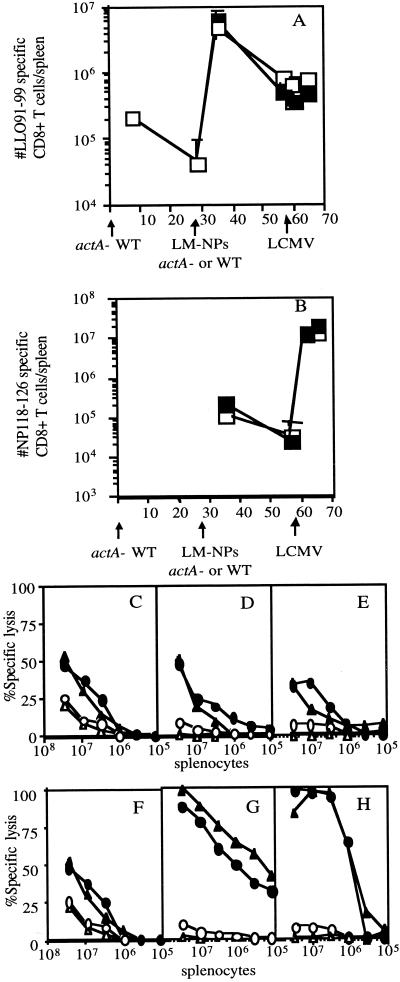FIG. 2.
Challenges of immune mice with actA-deficient and WT L. monocytogenes NPs generate functionally similar antigen-specific CD8+ T cells. BALB/c mice were immunized with 105 CFU of actA-deficient L. monocytogenes and challenged 28 days later with either 1.3 × 105 CFU of L. monocytogenes NPs or 1.1 × 105 CFU of actA-deficient L. monocytogenes NPs. The mice were challenged 28 days later with 2 × 105 LCMV particles. The numbers of LLO91-99-specific (A) and NP118-126-specific (B) CD8+ T cells per spleen were determined by intracellular cytokine staining for IFN-γ on the indicated days after immunization. (A and B) Open symbols, mice challenged with actA-deficient L. monocytogenes NPs; closed symbols, mice challenged with WT L. monocytogenes NPs. Three mice per group were analyzed at each time point. The lytic ability of antigen-specific CD8+ T cells was tested in a 21-h, ex vivo 51Cr release assay at 3 (C and F), 5 (D and G), and 9 (E and H) days after LCMV challenge of immunized mice. Specific lysis of P815 (C through H, open symbols) and P815 targets coated with LLO91-99 (C through E, filled symbols) or NP118-126 (F through H, filled symbols) was analyzed for mice immunized with actA-deficient L. monocytogenes NPs (circles, C through H) or WT L. monocytogenes NPs (triangles, C through H). For analysis, splenocytes from three mice were pooled at each time point.

